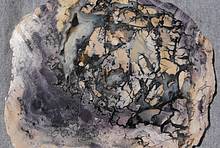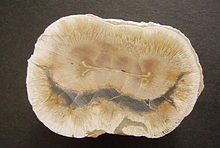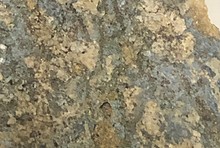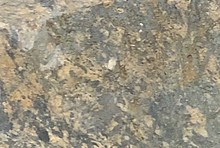Home PageAbout MindatThe Mindat ManualHistory of MindatCopyright StatusWho We AreContact UsAdvertise on Mindat
Donate to MindatCorporate SponsorshipSponsor a PageSponsored PagesMindat AdvertisersAdvertise on Mindat
Learning CenterWhat is a mineral?The most common minerals on earthInformation for EducatorsMindat ArticlesThe ElementsThe Rock H. Currier Digital LibraryGeologic Time
Minerals by PropertiesMinerals by ChemistryAdvanced Locality SearchRandom MineralRandom LocalitySearch by minIDLocalities Near MeSearch ArticlesSearch GlossaryMore Search Options
The Mindat ManualAdd a New PhotoRate PhotosLocality Edit ReportCoordinate Completion ReportAdd Glossary Item
Mining CompaniesStatisticsUsersMineral MuseumsClubs & OrganizationsMineral Shows & EventsThe Mindat DirectoryDevice SettingsThe Mineral Quiz
Photo SearchPhoto GalleriesSearch by ColorNew Photos TodayNew Photos YesterdayMembers' Photo GalleriesPast Photo of the Day GalleryPhotography
╳Discussions
💬 Home🔎 Search📅 LatestGroups
EducationOpen discussion area.Fakes & FraudsOpen discussion area.Field CollectingOpen discussion area.FossilsOpen discussion area.Gems and GemologyOpen discussion area.GeneralOpen discussion area.How to ContributeOpen discussion area.Identity HelpOpen discussion area.Improving Mindat.orgOpen discussion area.LocalitiesOpen discussion area.Lost and Stolen SpecimensOpen discussion area.MarketplaceOpen discussion area.MeteoritesOpen discussion area.Mindat ProductsOpen discussion area.Mineral ExchangesOpen discussion area.Mineral PhotographyOpen discussion area.Mineral ShowsOpen discussion area.Mineralogical ClassificationOpen discussion area.Mineralogy CourseOpen discussion area.MineralsOpen discussion area.Minerals and MuseumsOpen discussion area.PhotosOpen discussion area.Techniques for CollectorsOpen discussion area.The Rock H. Currier Digital LibraryOpen discussion area.UV MineralsOpen discussion area.Recent Images in Discussions
Techniques for CollectorsMalachite and HCL Reactoin

31st Jan 2006 15:17 UTCRayOfOz
Cu2(CO3)2(OH)2 + HCL → CO2 + H2O + Cu2CL ???
Any help would be greatly appreciated.
1st Feb 2006 09:15 UTCPeter Haas
Cu2(CO3)(OH)2 + 4 HCl -> CO2 + 3 H2O + 2 CuCl2

2nd Feb 2006 14:29 UTCRayofoz
The formula for Malachite I took directly from Simon and Schuster's Guide to Rocks and Minerals. I was able to find a complete formula showing the reaction of iron with the cloride ions.
2Fe +Cu2CO3(OH)2 +4 HCL -→ CO2(g) + 3H2O(aq) + 2FeCl2(aq) + 2Cu(s)

8th Mar 2006 13:59 UTCAl Konyers
what is the structural formula of malachite?
Are the atoms all connected like in HCl or are they ionic, like NaCl?
8th Mar 2006 14:20 UTCDavid Von Bargen Manager
http://pubs.acs.org/subscribe/journals/jpcbfk/suppinfo/jp052864i/jp052864isi20050720_015220.pdf?sessid=6006l3

8th Mar 2006 14:36 UTCAl Konyers
http://i2.tinypic.com/qzes1y.jpg
http://i2.tinypic.com/qzes1y.jpg
8th Mar 2006 14:55 UTCDavid Von Bargen Manager
A simplified formula would be Cu2CH2O5. The partitioning of the oxygen in the carbonate and hydroxl groups connotates the structural grouping of the anion elements. (the carbonate is actually the carbon surrounded by three oxygens, and doesn't have O-O bonding).
The exact positions of the atoms in the unit cell can be found by searching for malachite at:
http://rruff.geo.arizona.edu/AMS/amcsd.php

22nd Aug 2006 08:13 UTCManas Das
Pls. Help. I need your support
24th Aug 2006 03:40 UTCPaul L. Boyer

6th Mar 2013 12:07 UTCkurt li

21st Mar 2013 01:05 UTCAlfredo Petrov Manager

21st Mar 2013 05:20 UTCDoug Daniels




Mindat.org is an outreach project of the Hudson Institute of Mineralogy, a 501(c)(3) not-for-profit organization.
Copyright © mindat.org and the Hudson Institute of Mineralogy 1993-2024, except where stated. Most political location boundaries are © OpenStreetMap contributors. Mindat.org relies on the contributions of thousands of members and supporters. Founded in 2000 by Jolyon Ralph.
Privacy Policy - Terms & Conditions - Contact Us / DMCA issues - Report a bug/vulnerability Current server date and time: April 23, 2024 18:44:40
Copyright © mindat.org and the Hudson Institute of Mineralogy 1993-2024, except where stated. Most political location boundaries are © OpenStreetMap contributors. Mindat.org relies on the contributions of thousands of members and supporters. Founded in 2000 by Jolyon Ralph.
Privacy Policy - Terms & Conditions - Contact Us / DMCA issues - Report a bug/vulnerability Current server date and time: April 23, 2024 18:44:40











